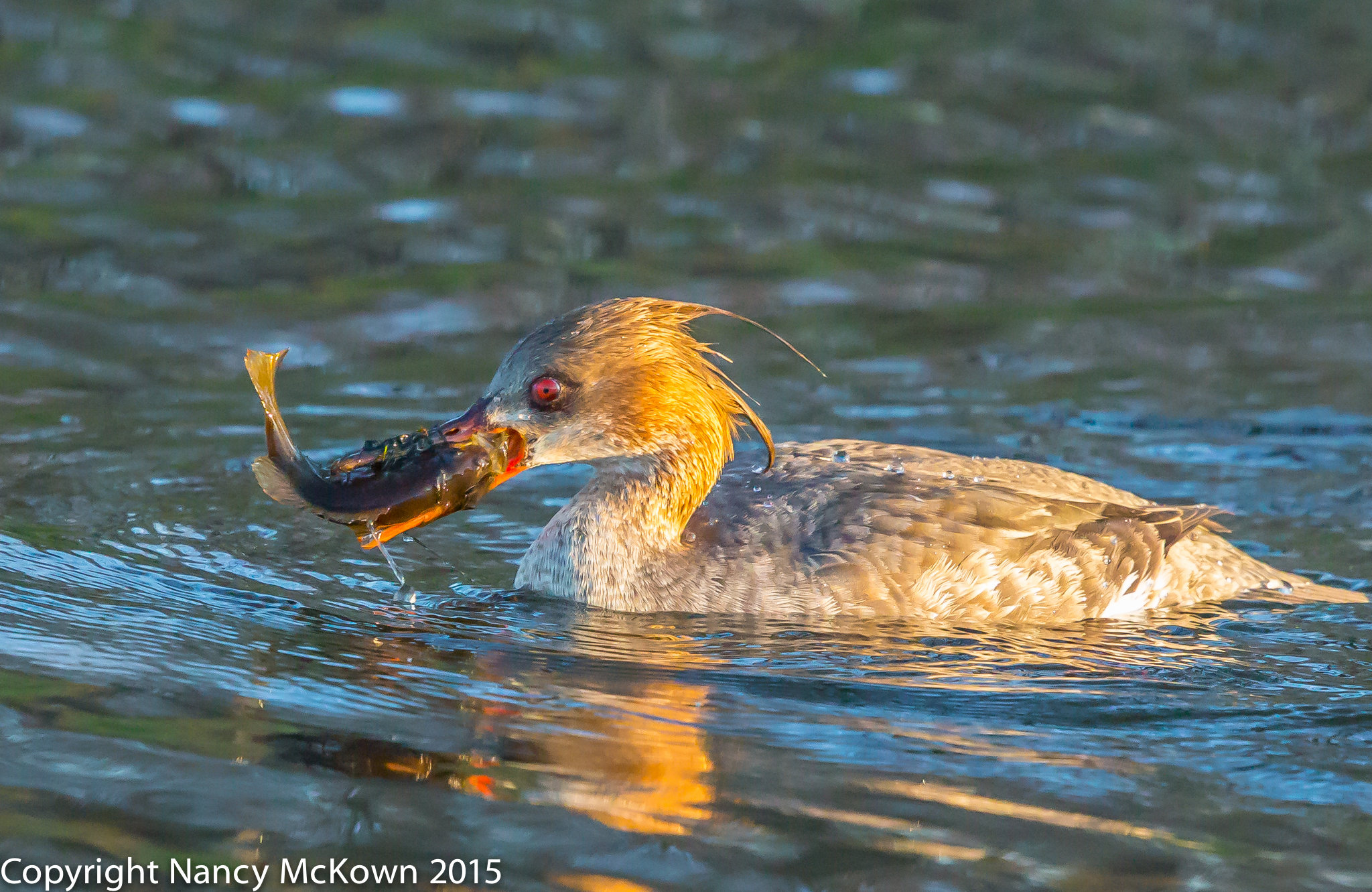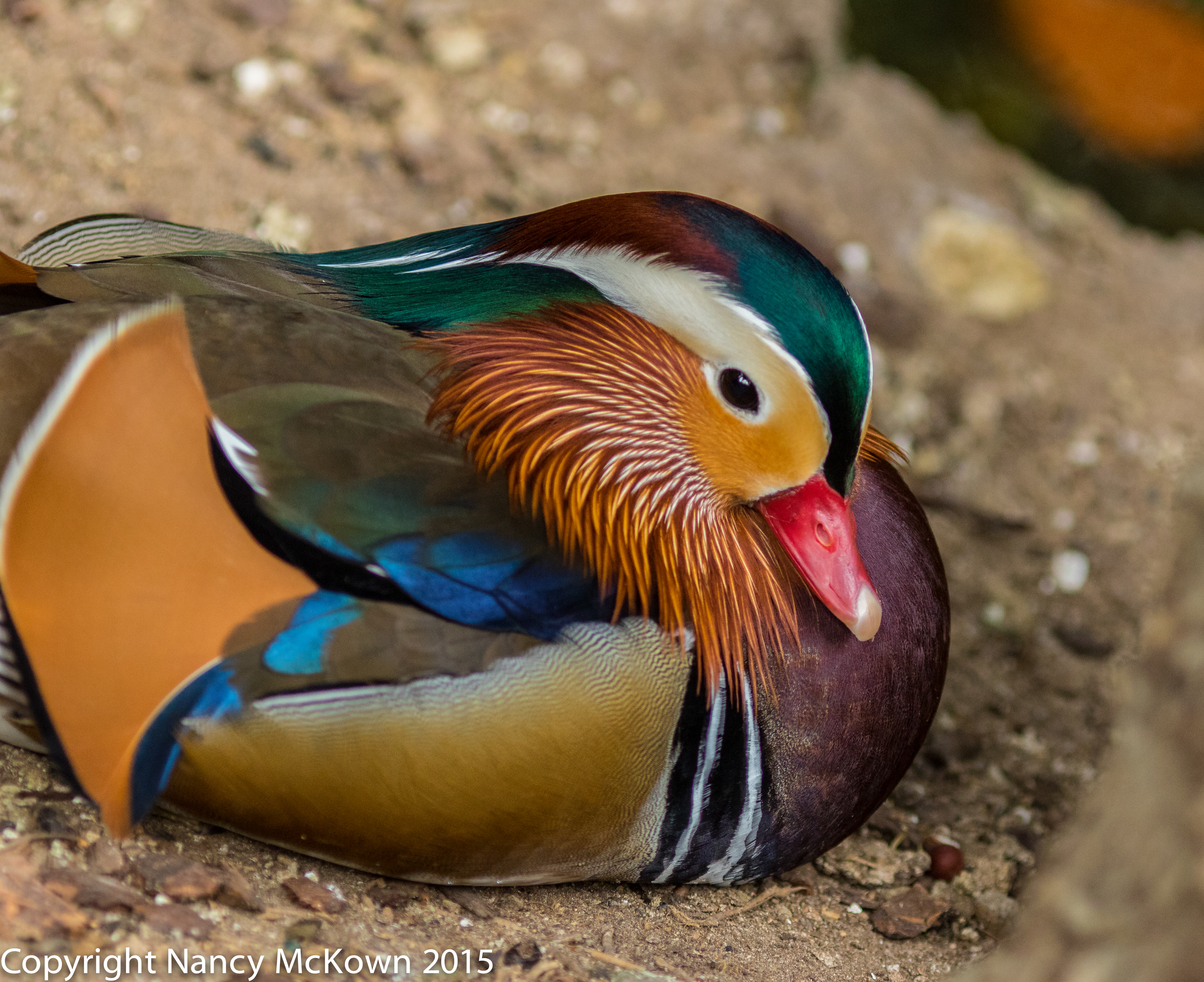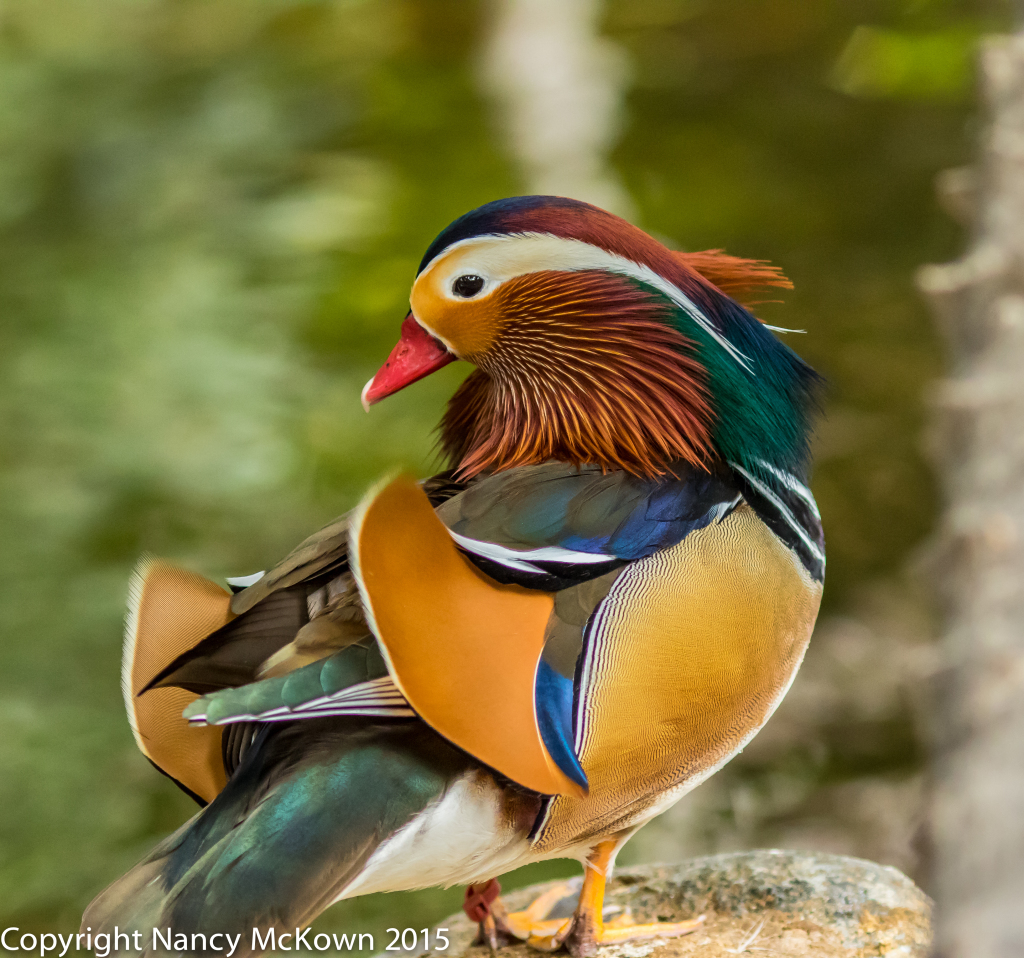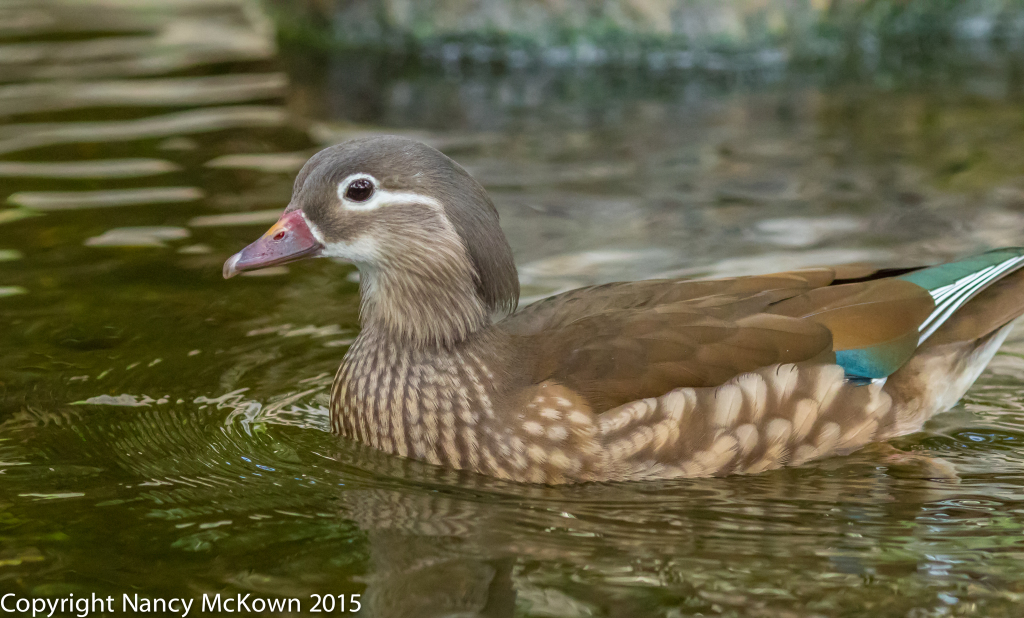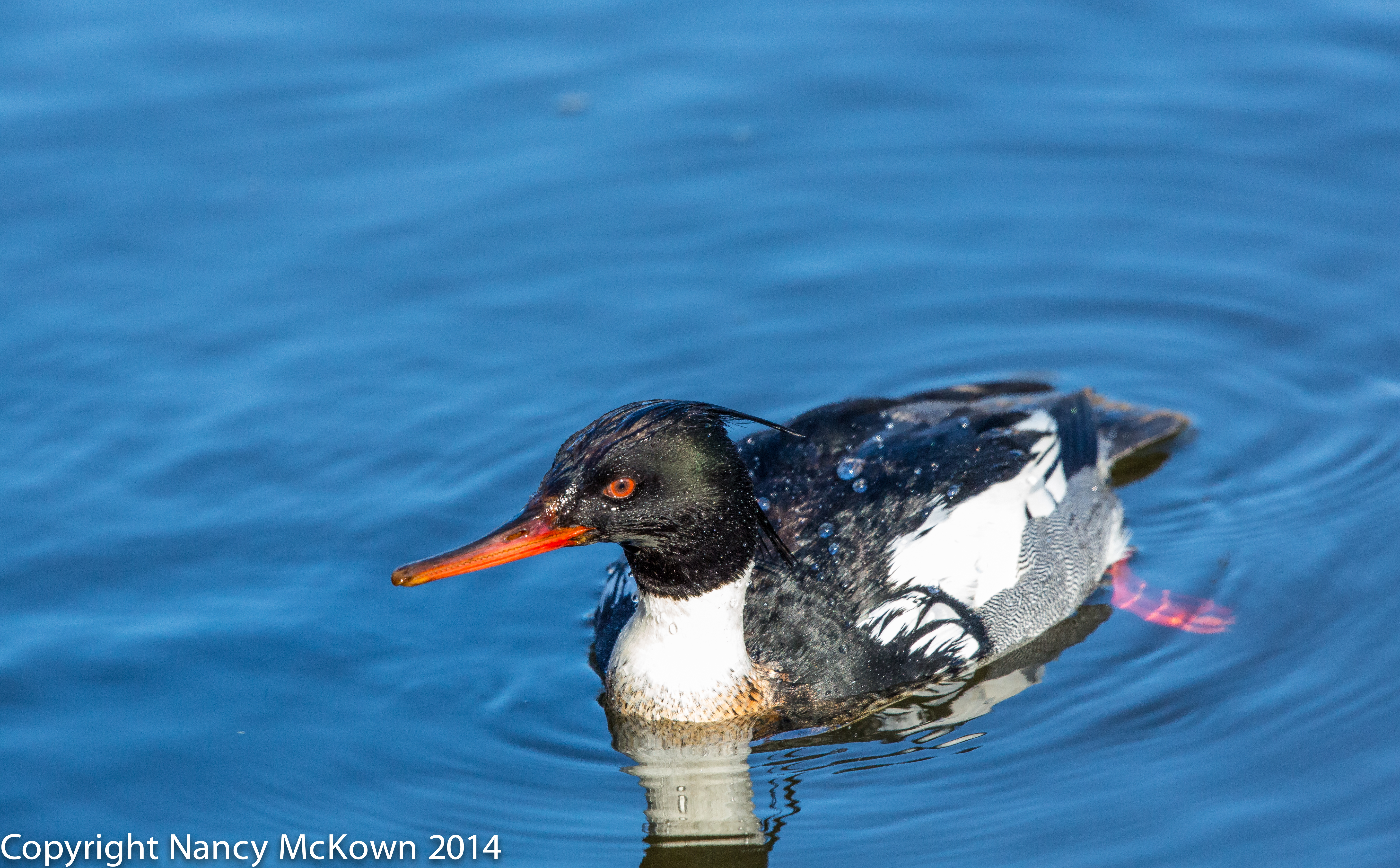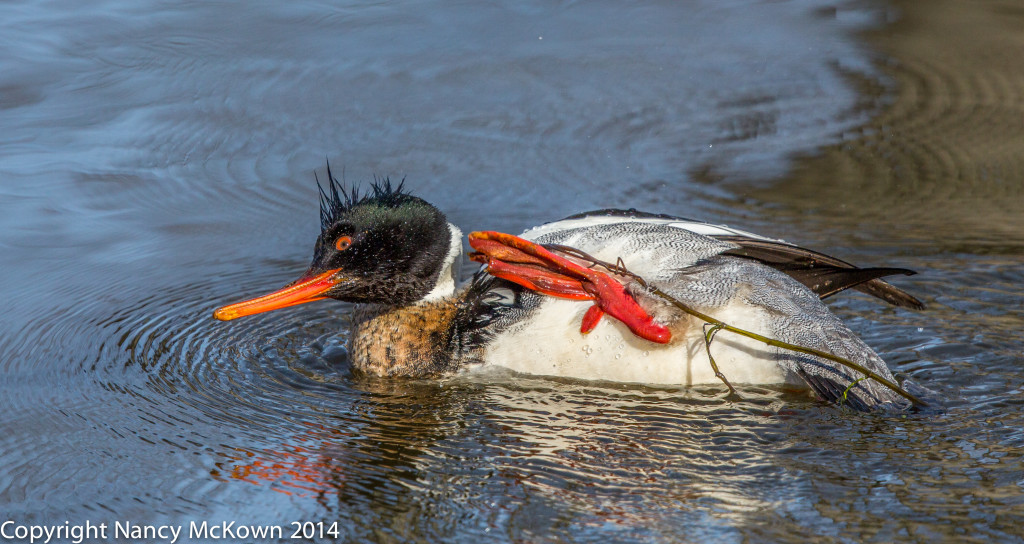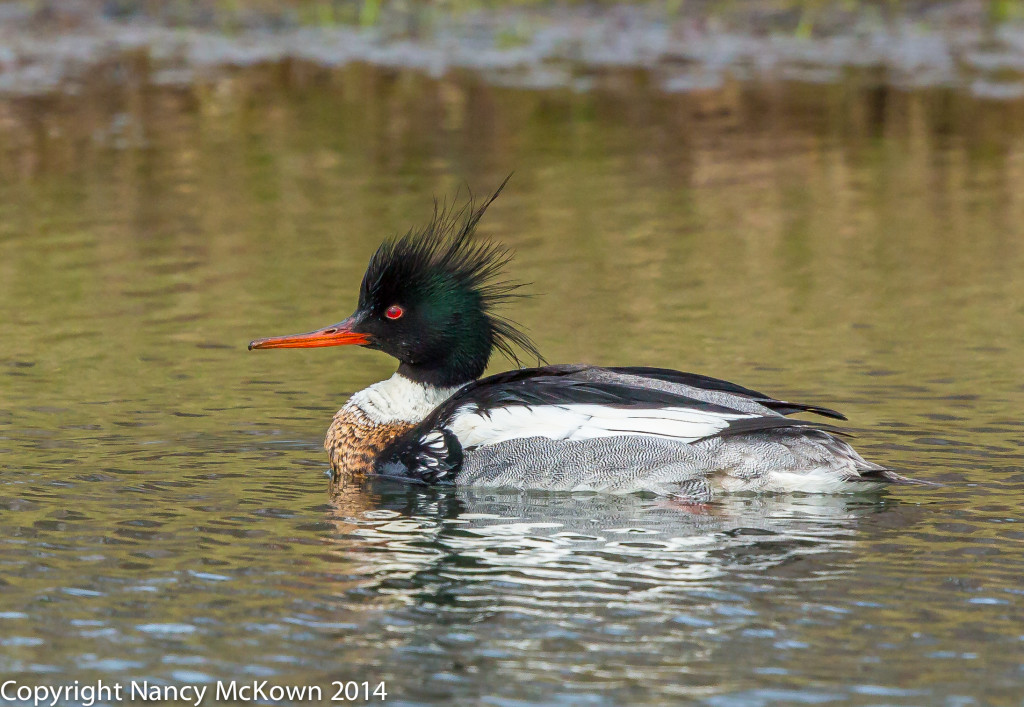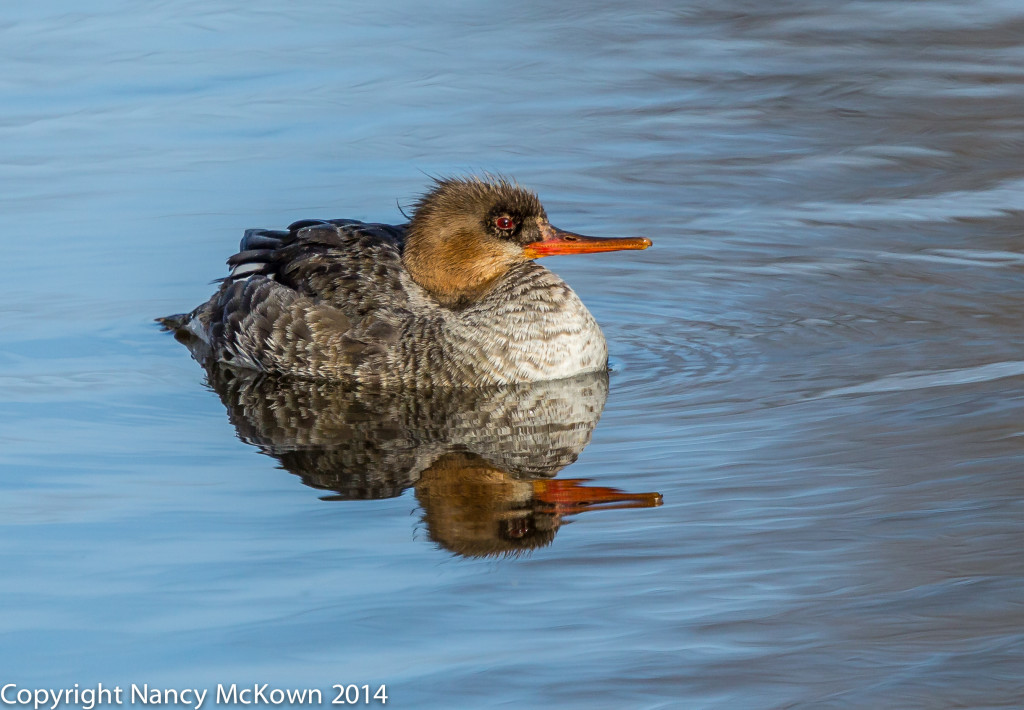Action in the Early Morning Light
The photo below was shot early in the morning, before the sun had a chance to spread its light into the dark shadows of this local church pond. This female Red Breasted Merganser had just captured a sunfish almost as big as her head, and was holding on tight with her sharp serrated beak. The sunfish was not about to submit without a fight, and the Merganser swam in wide circles as she tried to position it so she could safely swallow it whole.
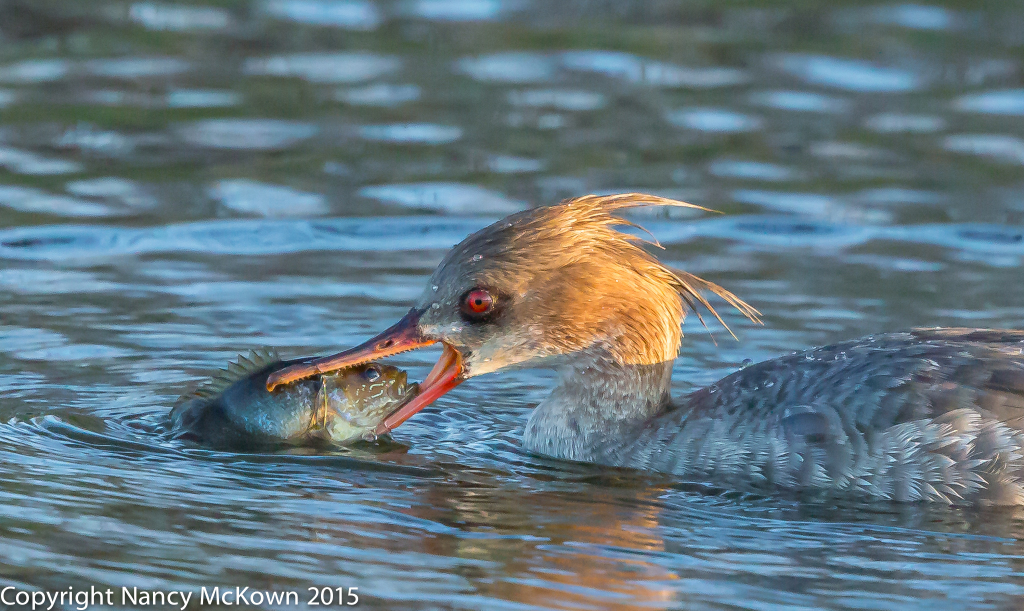
ISO 8000; f/8; 1/2000 second
With all this fast and frantic activity, I didn’t dare lower my shutter speed below 1/2000 second. The 500mm lens with 1.4 extender delivers a very shallow depth of field, so I preset the aperture at f/8. The auto ISO evaluated the light and responded to these exposure parameters with an ISO of 8000! A very high ISO – yet the clarity the 5D Mark III sensor (22.3 MP) delivered in this low light was good. I am happy with the results.
NOTE: The Merganser did eventually manage to swallow the fish (see photos below).
DSLR Megapixel Race
Canon has introduced two new 50.6 megapixel full frame DSLR cameras- (5DS R and 5DS). It’s an effort to move closer to the detail and quality produced by a medium format camera sensor. Somewhere in the mix of sensor size, pixel size, pixel density and software processing algorithms, the design engineers still can not devise a DSLR sensor (36 x 24 mm) that has both exceptional low light performance and 50 megapixel detail. In both of these new cameras, the sensor’s light gathering potential is sacrificed to bump up the megapixel count.

the sun as she wrestled with the sunfish, lowering the ISO.
ISO6400; f/8; 1/2000 Second
Advantages of Monster Megapixels
- The main advantage of having a DSLR camera with densely packed megapixels is that you can capture an enormous amount of detail. The 50.6 cameras would definitely appeal to specialized markets; those photographers who crave detail and are equipped to incorporate artificial light when needed to keep ISO levels low.
- Distance between the lens and subject would be less of an issue because the high megapixel count would give photographers more freedom to crop (in post processing) without denigrating the image too much.
- Photographers would be able to print super sized, high quality enlargements never before possible from a DSLR camera.
- The new Canon DSLR cameras include new in-camera cropped shooting modes. (Note: I bought a cropped sensor camera – a 7D Mark II – to get the extra reach. See this post.) These settings cut back on the megapixel count (the 1.3x crop produces 30MP images, while the 1.6x crop produces 19MP images) and consequently take a small toll on resolution. Photographers benefit from the extra lens reach that cropped sensors provide and possibly better burst rates than the advertised 5 frames per second.
Drawbacks of Monster Megapixels
- The main disadvantage for photographers who rely on natural light is the mediocre low light performance of the new Canon 5DS cameras. (ISO recommended range = 100-6400) My guess is that the light gathering potential of the new sensor could never produce the low light quality achieved by the 22.3MG sensor in the Canon 5D Mark III, once I strayed above ISO 1000 or so.
- Photographers would not be able to see the high level of detail on most computer monitors.
- The size of the files is huge. The smallest part of a digital image is a pixel -one dot of information- measured in PPI (PIXELS PER INCH). A megapixel is approximately a million pixels. Currently, my full sensor 22.3 MG 5DMark III DSLR camera exports images that take up massive amounts of hard drive space. You must ask yourself: Do you have the computer processing power and the hard drive storage needed to process 50.6 million pixels per photo?
- Despite the in-camera Digit 6 processor improvements and USB 3 port, the new 5 DS cameras will use more power and take longer to process, store and transfer all that data. (Amazingly, these cameras are still capable of shooting 5 fps continuous shooting. NOTE: Canon 5D Mark III is not much more….burst rate = 6 fps.)
- Bigger compact flash and SD memory cards to accommodate the massive storage requirements will set photographers back a bit. At this writing, a SanDisk 128GB Extreme Pro CompactFlash Card, with UDMA 7 Speed Up To 160MB/s, costs $467.00
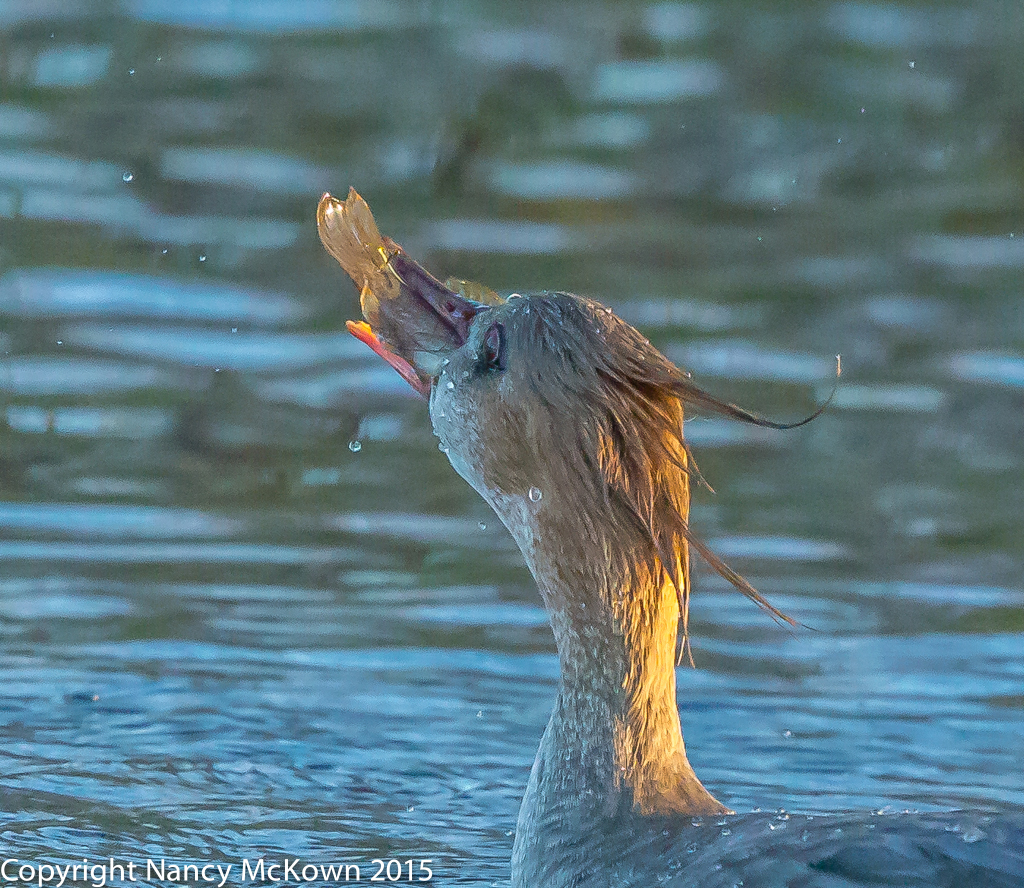
the sunfish whole. I set the shutter
speed a little higher in this photo, raising the ISO to 10,000.
ISO 10000; f/8; 1/2500 Second
Photographers Who Rely Exclusively on Natural Light
For a bird photographer living in cloudy SW Michigan and reliant on natural light, one of the major draws of a well balanced full frame sensor is its superior low light performance. As much as I try to wait for bright sunny days before I take my camera out, inevitably the clouds creep in or birds I want to photograph perch in the shadows. I need a CMOS sensor that delivers outstanding detail and excellent low light performance.
If you wish to read about the technical aspects of higher megapixel sensors – there is lots of info on the web. Unless money is not an issue, I recommend that you take the time to learn about how sensors work and use that knowledge to figure out what camera works best for you.
